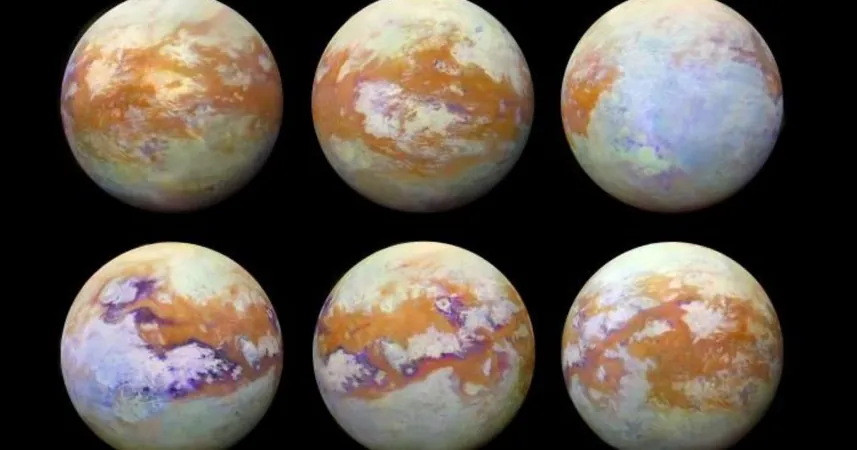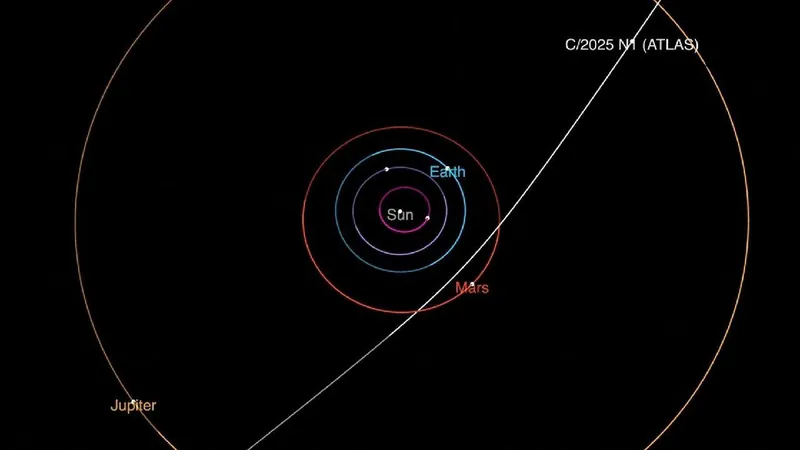
Is There Life on Titan? New Study Reveals Surprising Limits
2025-05-24
Author: Arjun
Excitement is building as NASA's Dragonfly rotorcraft prepares for its thrilling mission to Saturn's enigmatic moon, Titan. Set to touch down in 2034, this groundbreaking expedition aims to uncover secrets about the moon's ability to host life.
Titan, shrouded in a dense atmosphere, offers conditions reminiscent of Earth, with vast subsurface oceans. Yet, the moon's intriguing mix of liquid methane, ice, and organic material sparks questions about its true potential for life.
New Insights Into Titan's Hostile Environment
A pioneering study from researchers at the University of Arizona sheds light on the complexities of Titan's environment. Co-led by Antonin Affholder from Arizona and Peter Higgins from Harvard, the study presents a nuanced perspective on Titan's organic wealth and its implications for life.
While the presence of organic molecules suggests the possibility of life, Affholder cautions against assumptions. He states, Not all these organics may serve as food sources, and the vastness of Titan's ocean complicates access to nutrients. This reality emphasizes the need for a detailed examination of Titan's unique conditions.
Exploring Titan's Ocean Depths
Published in The Planetary Science Journal, the team's research employs bioenergetic modeling to investigate Titan's oceans, which could be an astonishing 300 miles deep. While conditions might support simple life forms, the potential for that life to flourish is significantly hindered.
The main roadblock? A scarcity of consumable molecules in Titan's harsh, oxygen-deprived waters. Any microbial life that could exist would likely rely on fermentation rather than respiration—similar to early life on Earth.
Could Glycine Be the Key?
The researchers turned their focus to glycine, an amino acid believed to be prevalent in primordial cosmic materials. Affholder asks, Could similar microbes thrive on Titan? What role could Titan's ocean play in nurturing a biosphere fueled by the array of organic molecules in its atmosphere?
However, the study reveals a grim reality: the icy shell atop Titan's oceans prevents glycine from reaching the depths where life might exist, leaving any potential microbes in a perpetual state of hunger.
The Search for Tiny Life on Titan
While this research does not definitively rule out life on Titan, it paints a picture of extreme difficulty in locating it. Any microbial organisms would be incredibly small, elusive, and sparse—essentially needles in a vast oceanic haystack.
As the Dragonfly mission approaches, one thing is clear: Titan remains an intriguing and complex puzzle in our search for extraterrestrial life. Will we unveil the secrets of this icy moon, or will it continue to guard its mysteries?

 Brasil (PT)
Brasil (PT)
 Canada (EN)
Canada (EN)
 Chile (ES)
Chile (ES)
 Česko (CS)
Česko (CS)
 대한민국 (KO)
대한민국 (KO)
 España (ES)
España (ES)
 France (FR)
France (FR)
 Hong Kong (EN)
Hong Kong (EN)
 Italia (IT)
Italia (IT)
 日本 (JA)
日本 (JA)
 Magyarország (HU)
Magyarország (HU)
 Norge (NO)
Norge (NO)
 Polska (PL)
Polska (PL)
 Schweiz (DE)
Schweiz (DE)
 Singapore (EN)
Singapore (EN)
 Sverige (SV)
Sverige (SV)
 Suomi (FI)
Suomi (FI)
 Türkiye (TR)
Türkiye (TR)
 الإمارات العربية المتحدة (AR)
الإمارات العربية المتحدة (AR)